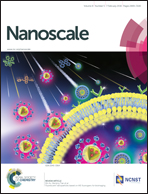Self-assembled nanomaterials for photoacoustic imaging
Abstract
In recent years, extensive endeavors have been paid to construct functional self-assembled nanomaterials for various applications such as catalysis, separation, energy and biomedicines. To date, different strategies have been developed for preparing nanomaterials with diversified structures and functionalities via fine tuning of self-assembled building blocks. In terms of biomedical applications, bioimaging technologies are urgently calling for high-efficient probes/contrast agents for high-performance bioimaging. Photoacoustic (PA) imaging is an emerging whole-body imaging modality offering high spatial resolution, deep penetration and high contrast in vivo. The self-assembled nanomaterials show high stability in vivo, specific tolerance to sterilization and prolonged half-life stability and desirable targeting properties, which is a kind of promising PA contrast agents for biomedical imaging. Herein, we focus on summarizing recent advances in smart self-assembled nanomaterials with NIR absorption as PA contrast agents for biomedical imaging. According to the preparation strategy of the contrast agents, the self-assembled nanomaterials are categorized into two groups, i.e., the ex situ and in situ self-assembled nanomaterials. The driving forces, assembly modes and regulation of PA properties of self-assembled nanomaterials and their applications for long-term imaging, enzyme activity detection and aggregation-induced retention (AIR) effect for diagnosis and therapy are emphasized. Finally, we conclude with an outlook towards future developments of self-assembled nanomaterials for PA imaging.


 Please wait while we load your content...
Please wait while we load your content...